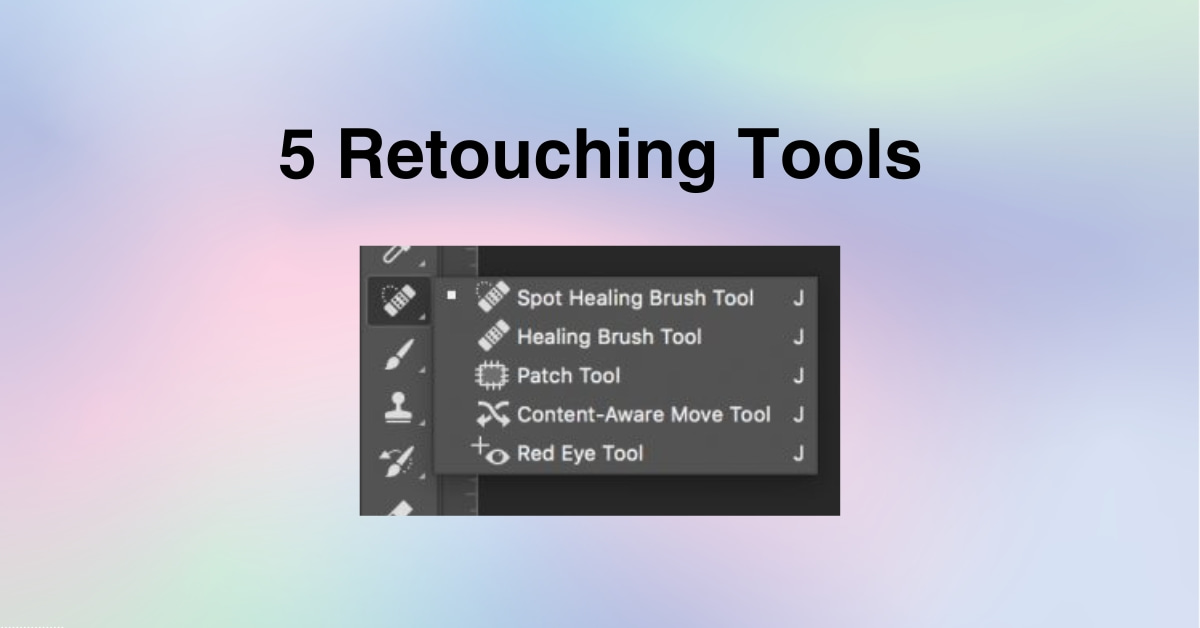Photo retouching is a versatile art that allows you to enhance, correct, and transform images. While the world of retouching offers a plethora of tools and techniques, there are five fundamental tools that every retoucher should be familiar with. In this article, we’ll delve into these essential retouching tools, helping you understand their functions and how to use them effectively.
Fundamentals of Photo Retouching
Before we dive into the essential tools, it’s important to grasp the foundational principles of photo retouching:
- Non-Destructive Editing: Work on a duplicate layer or use adjustment layers to preserve the original image.
- Subtlety: The best retouching is often invisible – it enhances the image without drawing attention to the edits.
- Consistency: Maintain a consistent style throughout your retouching to ensure a cohesive look.
Five Essential Retouching Tools
- Healing Brush/Spot Healing Brush Tool: These tools are excellent for removing blemishes, spots, and imperfections. The Spot Healing Brush is particularly convenient for quick fixes, while the regular Healing Brush offers more control.
- Clone Stamp Tool: The Clone Stamp allows you to duplicate one part of the image and apply it to another, making it a versatile tool for removing unwanted elements.
- Dodge and Burn Tools: Dodge lightens areas of the image, while Burn darkens them. These tools are crucial for enhancing shadows and highlights, adding depth and dimension to your photos.
- Brush Tool: The Brush Tool, when used with various blending modes, can be your go-to tool for smoothing skin, whitening teeth, or enhancing colors. It offers endless creative possibilities.
- Gradient Tool: The Gradient Tool can help you adjust exposure or color in a gradient across your image, making it invaluable for creating dynamic lighting and color effects.
Understanding the Power of Layers
Layers are a cornerstone of effective photo retouching:
- Adjustment Layers: Use these to make non-destructive adjustments to your image’s brightness, contrast, color, and more.
- Layer Masks: Layer masks allow you to control the visibility of your adjustments and retouching, ensuring a seamless and subtle result.
- Blending Modes: Experiment with blending modes to achieve various creative effects and enhance your retouching.
Creating a Seamless Retouching Workflow
To create a productive and efficient retouching workflow:
- Organize Your Layers: Name your layers and group them to keep your workspace tidy and well-structured.
- Use Hotkeys: Learn keyboard shortcuts to speed up your editing process.
- Regularly Zoom In and Out: Viewing your image at different scales helps you maintain a balanced perspective.
- Save Versions: Save multiple versions of your retouched image at different stages to track your progress and easily backtrack if necessary.
Conclusion
Mastering the five essential retouching tools is a fundamental step toward becoming a proficient photo retoucher. By understanding their functions and integrating them into a seamless photo editing workflow, you’ll have the tools you need to bring out the best in your images while preserving their natural beauty.
Frequently Asked Questions
Can I retouch photos effectively without expensive software like Photoshop?
Yes, there are alternative software options that are more budget-friendly and suitable for beginners, such as GIMP and Adobe Lightroom.
How can I maintain a natural look in retouched photos?
The key is subtlety. Avoid overuse of retouching tools, which can result in an unnatural appearance. Regularly zoom out to maintain perspective and avoid over-editing.
Are there any recommended resources or tutorials for learning advanced retouching techniques?
Many online tutorials and courses offer in-depth guidance on advanced retouching. Websites like Adobe’s official tutorials and YouTube channels dedicated to photo retouching are great places to start.
Can these tools be used for retouching both portraits and landscapes?
Absolutely. While some tools are more commonly used in portrait retouching (such as the Healing Brush for skin), others like the Dodge and Burn tools and the Brush Tool can enhance both portrait and landscape images.
What is the biggest mistake to avoid in photo retouching?
The most common mistake is over-editing, which can lead to unnatural results. It’s essential to maintain the integrity and authenticity of the original image while enhancing it subtly.
This page was last edited on 19 February 2024, at 3:05 pm
